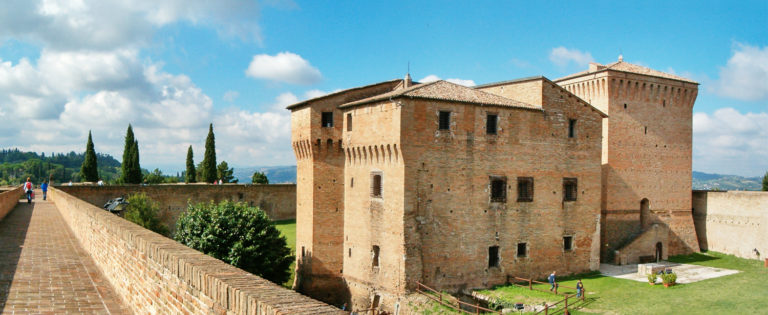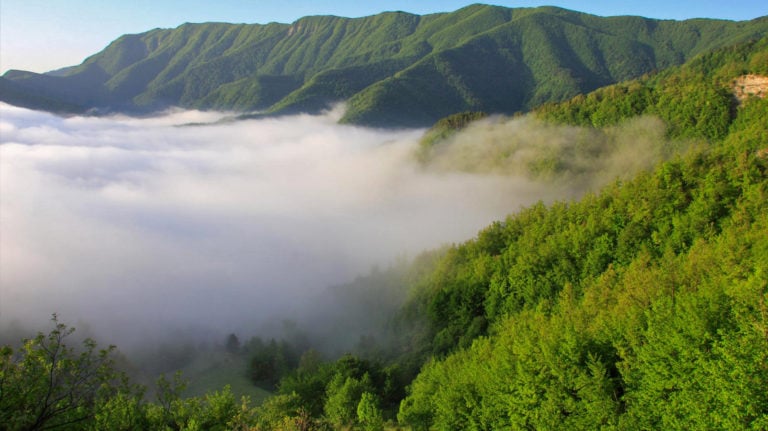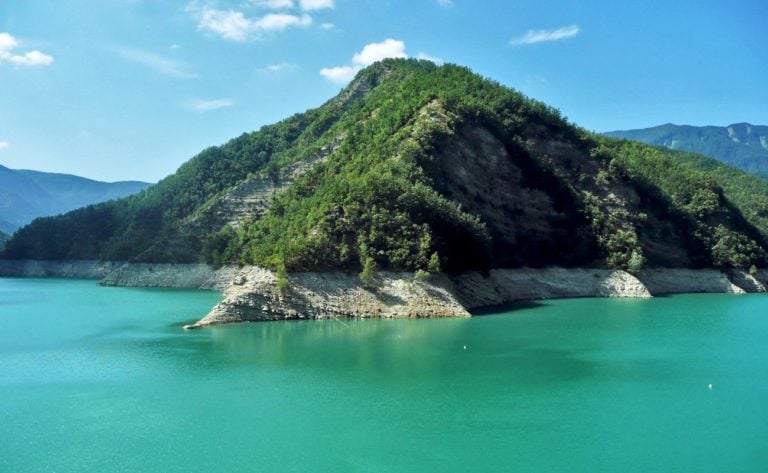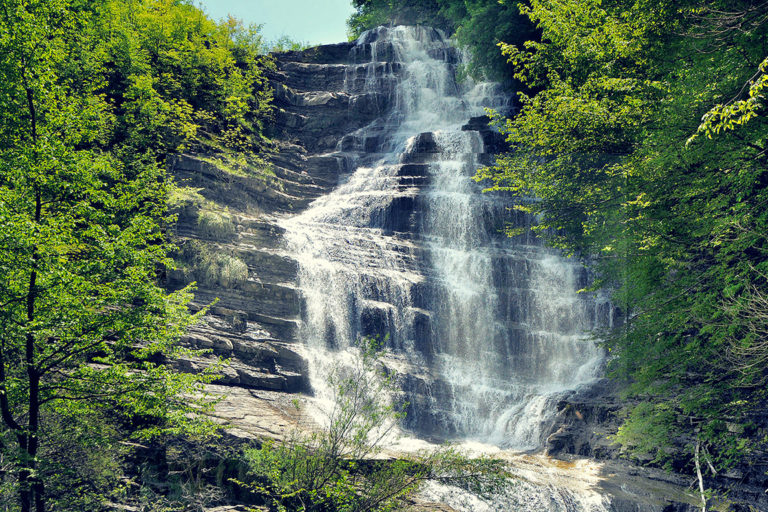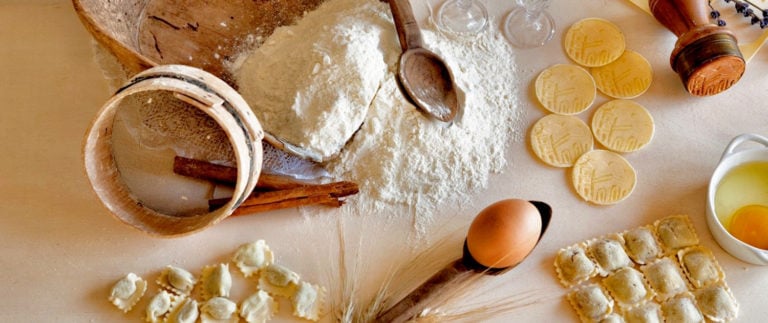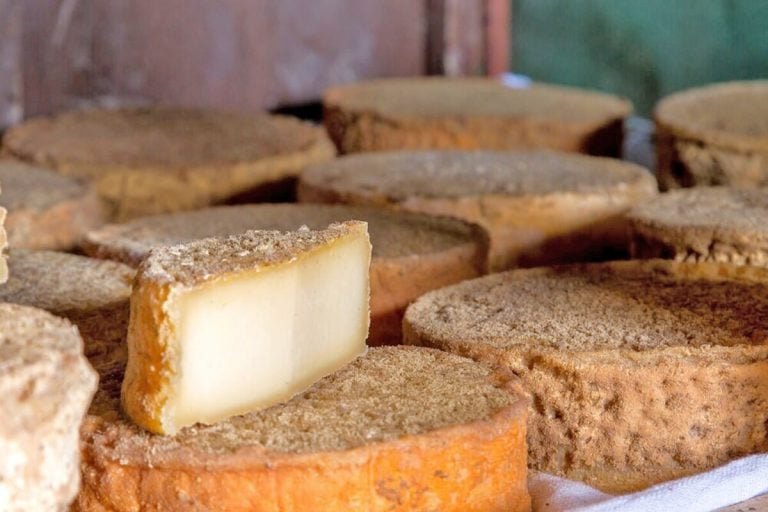
Time
72 h
Cesena and its outline of green hills, adorned with vineyards and orchards, are as beautiful as almost unknown. It seems strange but yet it is.
Many think of them as the beating heart of Romagna, and they are indeed of incomparable historical, gastronomic, artistic and natural importance. Just think of the view you can enjoy from the top: the sea is a stone’s throw away, and on fine days it almost seems like you may touch its water.
About 70 km ― this is the distance between Cesena and the Tuscan border: the land is dotted by a multitude of small towns with different souls and characters, as well as a palette of landscapes crossed by rivers and marked by the Tuscan-Romagna Apennines.
Land of first places and first fruits, many say that piadina was invented in these areas, which is very likely; others, on the other hand, claim that it’s the undisputed capital of Sangiovese, the Romagna wine par excellence.
One thing is certain: good food here is a dogma, respected and revered in every trattoria and tavern you’ll encounter while wandering along the ‛Strada dei Vini e dei Sapori dei Colli di Forlì and Cesena’ (Wine and Taste Route in the Hills of Forlì and Cesena).
If Secondo Casadei praised this land singing that no one can stay away from Romagna in his very well-known song ‘Romagna mia’, it’s not without reason. Today we will show you why taking you on a tour across the hills of Cesena
The magic of Sorrivoli and its castle
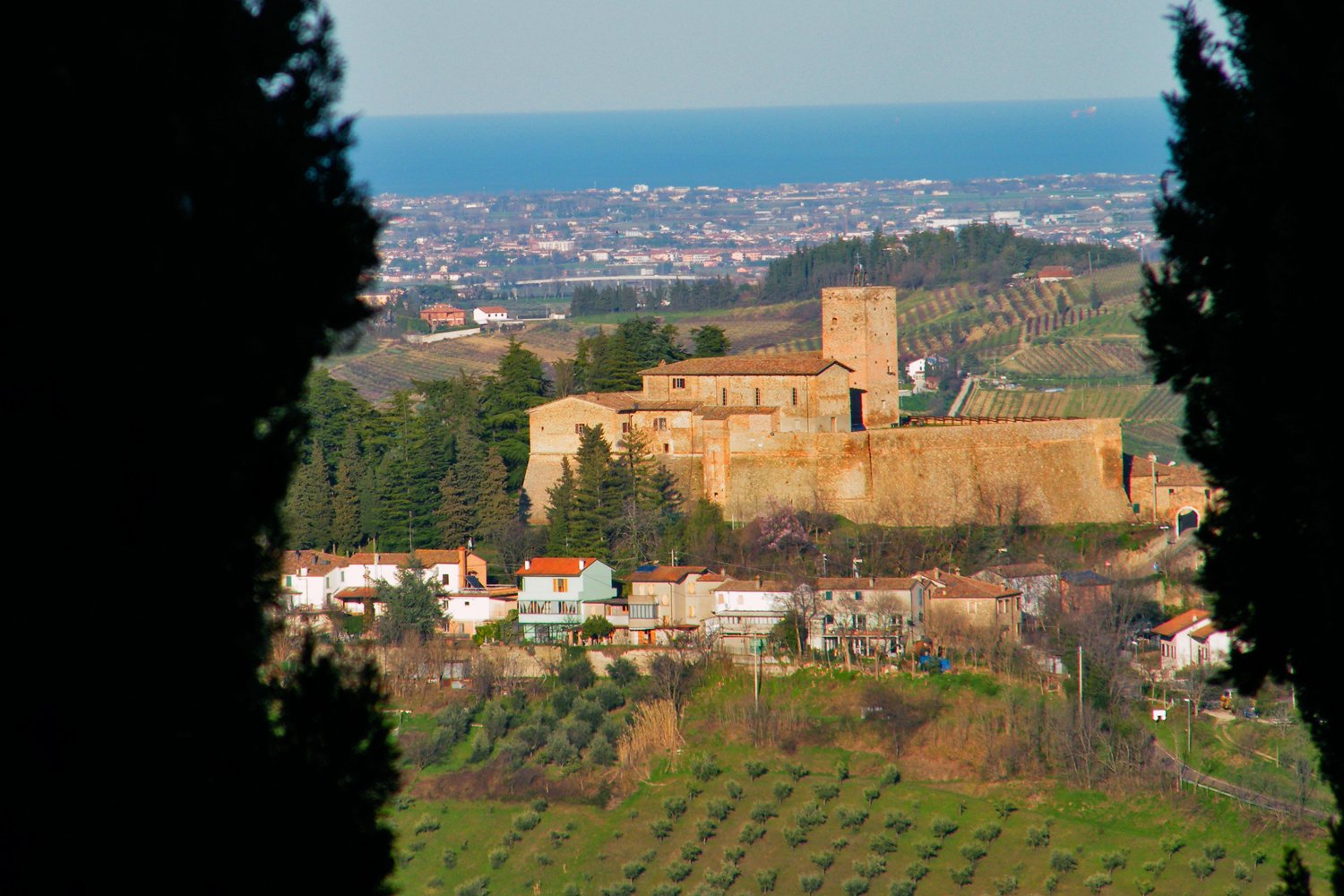
Far from the traditional tourist routes, Sorrivoli is a village just 9 km from Cesena. It is a place full of charm inherited from the Middle Ages.
This place emanates a powerful magic: its castle, dating back to the year 1000, is immersed in a landscape of hills streaked with vines, olive trees, and fruit trees. From there, in summer, you can see the blue Adriatic silhouetted on the horizon.
We recommend you visit this place, even if just for tasting the heavenly food of the restaurant run by the social cooperative Terra dei Miti: you will love its menu.
Monteleone, a village of love
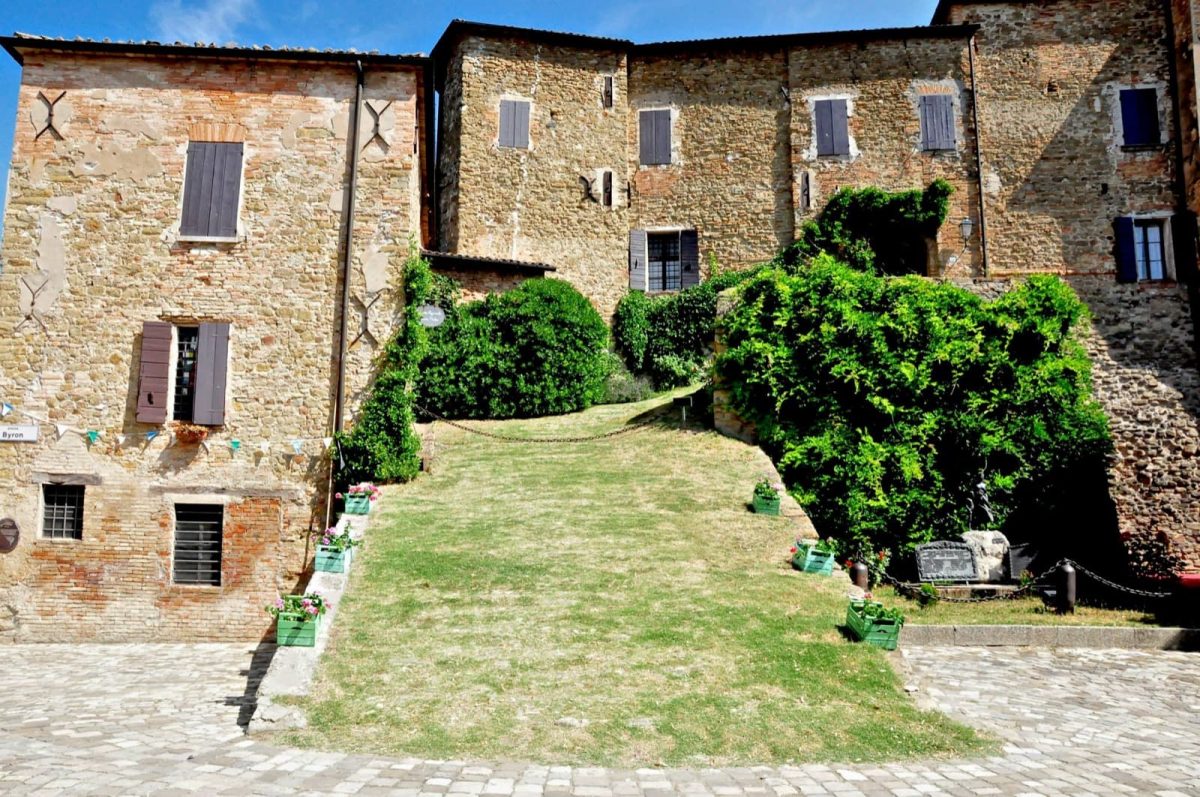
A small fraction of the municipality of Roncofreddo, the village of Monteleone ― which from a gate to the other measures only 100 meters ― boasts ancient medieval origins.
Here, everything speaks of love: It was within the walls of the castle that the young Countess Teresa Gamba, married to Alessandro Guiccioli of Ravenna, who was the owner of the fortress, surrendered to the arms of the famous English poet Lord Byron.
The love story is not a mystery, and the correspondence between the two lovers is preserved in the Classense library in Ravenna. Another certain thing is that this village deserves a visit, if only for its splendid landscape.
Longiano, fatherland of actors, cribs and contemporary art
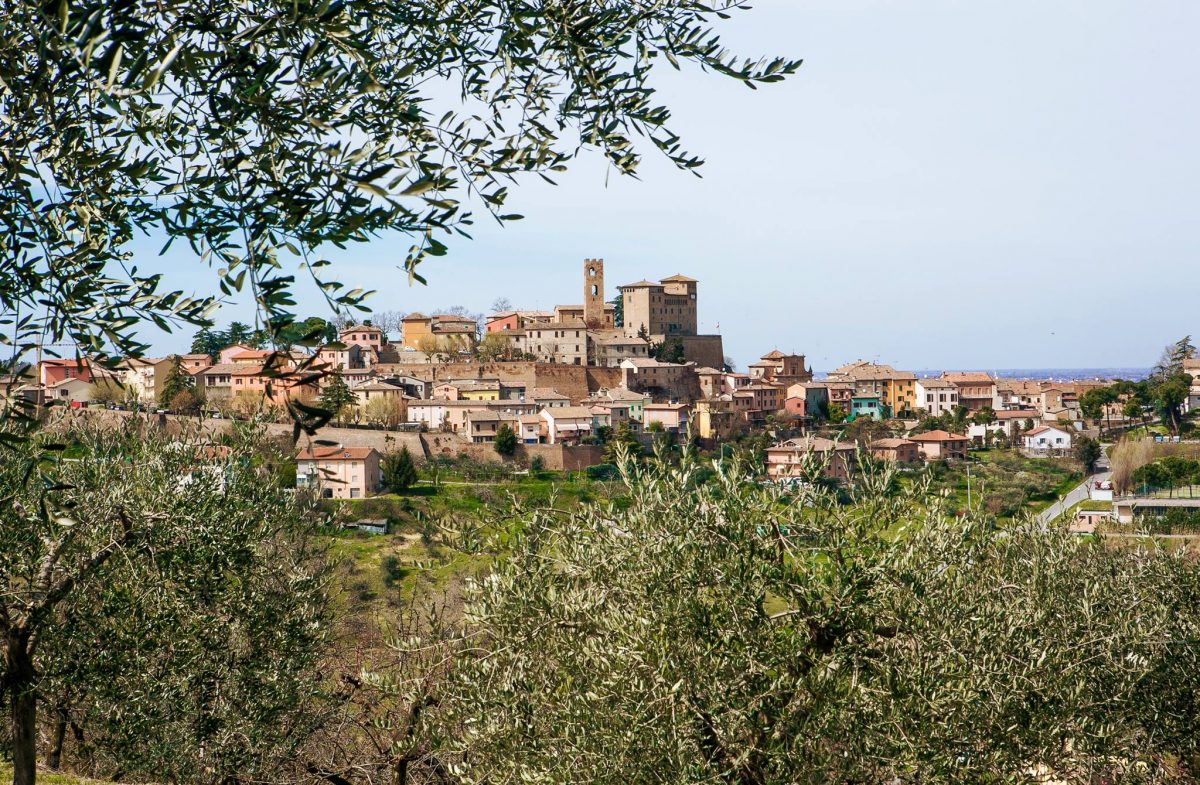
Longiano is certainly one of those places where, more than others, you can enjoy the distinguishing features of Romagna: good food, culture and joy ― much joy.
Among the many things the small village has to offer, not to be missed is the nineteenth-century theatre Errico Petrella, a refuge for many artists seeking inspiration.
Some of the most important representatives of the Italian music, theatrical and cabaret scenarios came here as a sort of pilgrimage place – and they have continued to step by over the years, among them Vittorio Gassman, Fabrizio De Andrè, Lucio Dalla, Dario Fo and Stefano Bollani.
Longiano is also famous for its nativity scenes: every year, at Christmas, streets and squares are teeming with cribs. There are scenes for all tastes: mechanical, artistic, virtual and even life-size.
Another interesting monument is the Malatesta Fortress, the seat of the Tito Balestra Foundation, one of the most consistent modern and contemporary art heritages in the entire Emilia-Romagna region.
In addition, also the Italian Museum of Cast Iron, housed within the walls of the former church of Santa Maria Delle Lacrime, definitely deserves a visit.
Sogliano, the cheese village
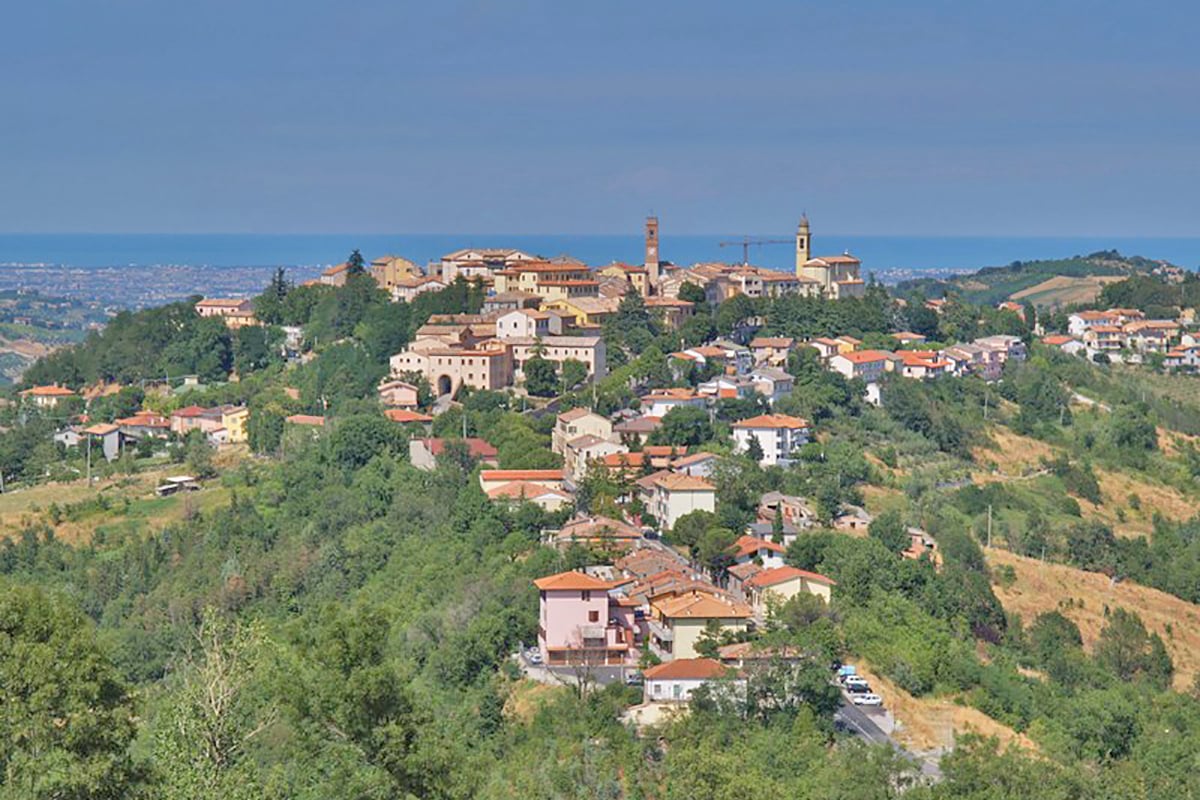
Surrounded by a great variety of landscapes and pleasant places, Sogliano is a small medieval village near the sources of the Rubicone river.
Appreciated by cyclists from all over the world (the famous race of the Nove Colli passes from here), it also offers landscapes of incomparable beauty and well-organized and mapped routes for any trekking lovers.
Beyond the charm of the historic centre, its name is inextricably linked to the Formaggio di Fossa, a typical cheese variety of the Romagna-Marche Apennines, people usually eat with jam, honey, or even grapes and pears.
This cheese has a very peculiar production method: it seasons inside pits dug into the rock or inside natural holes. Therefore, we suggest you not to miss an educational tour of the pits and don’t forget to buy some cheese before leaving!
Sarsina between theatre and superstition
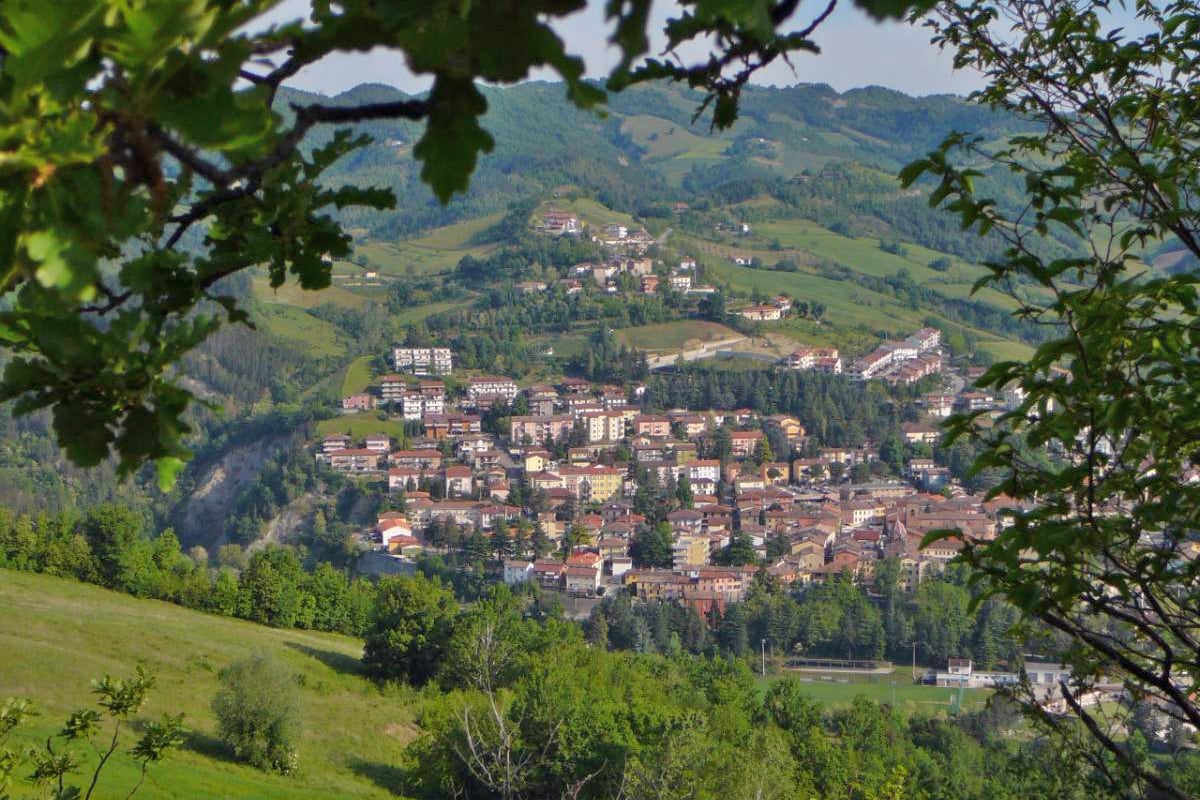
Founded in 350 aC, Sarsina is a delightful town located about 35 km from Cesena, along the E45, a very important road connecting Ravenna to Orte (Rome).
There are so many things to be seen and all steeped in history. You can start from the National Archaeological Museum; then you should visit the Mausoleum of Obulacco, a funeral monument from the Roman period; the phantom House of Plautus (the well-known Roman playwright Plautus was born here, in fact, and he has been dedicated a festival that every summer stages his plays); the Marmitte dei Giganti Park, a green lung and natural park and, finally, the Basilica of San Vicinio.
The Basilica of San Vicinio is a pilgrimage destination for many worshippers who gather throughout the year to perform the rite of the blessing with the collar of San Vicinio.
It is an act of purification for believers or an act of superstition for others. In any case, it is a gesture with a strong symbolic value, given also the crowd of people who wish to have the blessed object lied over their necks, believing that it drives away bad luck and ailments.
Bagno di Romagna and its healthy waters
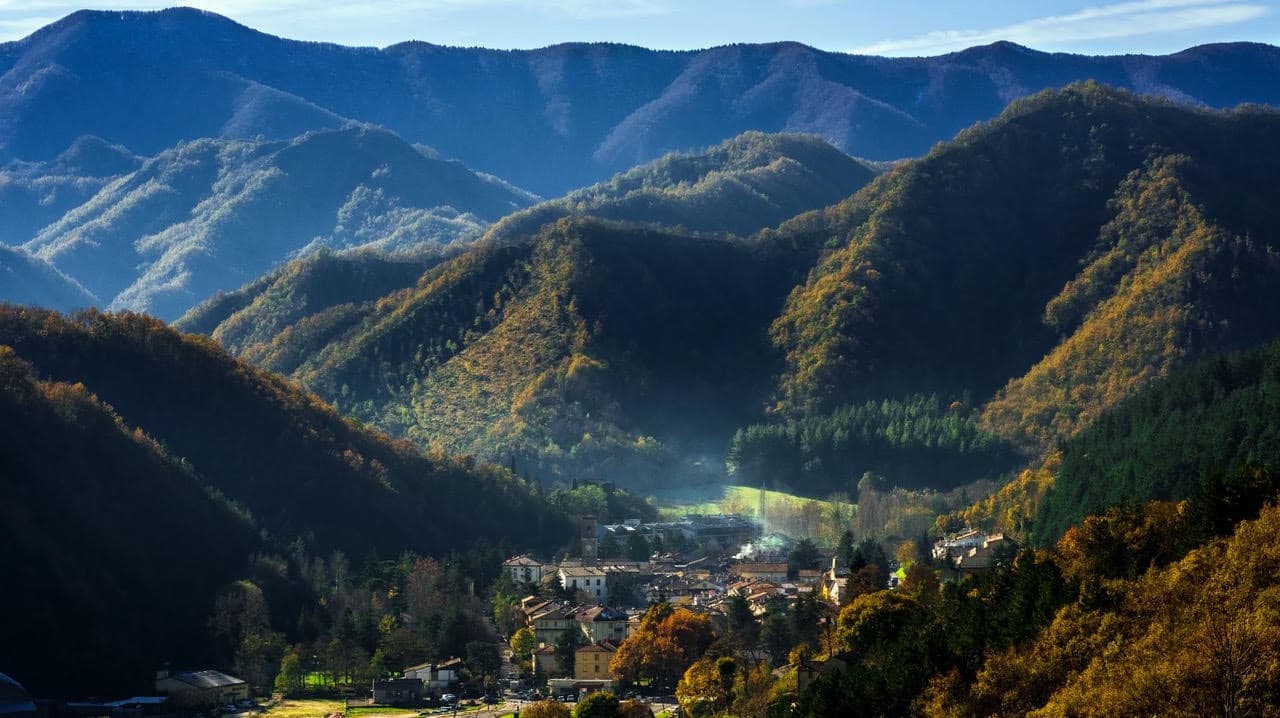
Bagno di Romagna has always been renowned for its natural thermal waters. In this little village you will certainly be astounded by splendid views, and thanks to its wooden heritage it is the ideal place for excursions and long walks.
Its pleasant thaumaturgical springs, with temperatures between 39 ° C and 47 ° C, are a cure both for the spirit and for the body. These wholesome waters, combined with the natural beauties of the Casentinesi Forests National Park, make the area a privileged destination for who is looking for well-being and tranquility.
In Bagno di Romagna are three thermal facilities where you can rest your tired limbs (Santa Agnese, Euroterme and Roseo); on the other hand, you will find many places to discover and itineraries into nature.
Despite everything just described, the beauty of Cesena and its hill is endless, and there are countless other suggestive places you can easily reach with short excursions or day trips.
There are so many small towns yet to be discovered in this area (Montiano, Roncofreddo, Montecodruzzo, Montetiffi, Borghi, Mercato Saraceno and even Bertinoro, even if more towards Forlì), as well as a number of artistic and natural beauties to visit (the Pieve di Montesorbo, the Ridracoli lake, Lake Quarto, the Benedictine abbey of Santa Maria del Monte) and stories to be listened to, perhaps over a good meal of tagliatelle and a good glass of Sangiovese wine.
Author

Davide Marino
Davide Marino was born archaeologist but ended up doing other things. Rational – but not methodic, slow – but passionate. A young enthusiast with grey hair
You may also like
Breathtaking landscapes in Romagna… and where to find them
by Davide Marino /// August 6, 2018
Lake Ridracoli: nature and hiking adventures in Emilia-Romagna
by Davide Marino /// May 26, 2020

Interested in our newsletter?
Every first of the month, an email (in Italian) with selected contents and upcoming events.
5 hikes to discover the Casentinesi Forests on foot
by Elisa Mazzini /// October 19, 2020
